DM168 INVESTIGATION
Lesotho’s ‘white gold’: Water, water everywhere … but not a drop to drink for local communities
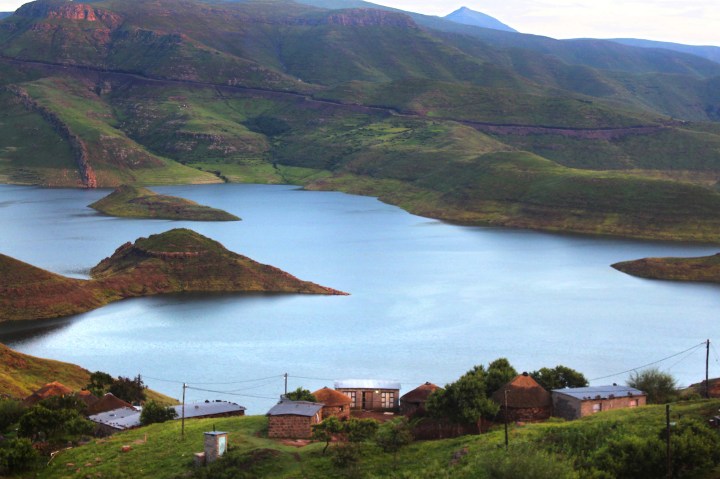
Nearly 800 million cubic metres of water go from Lesotho to South Africa in a year, earning the landlocked country billions. But people living in villages near the dams don’t benefit – and even have to get their own water from unprotected sources, from which waterborne diseases spread.
First published in the Daily Maverick 168 weekly newspaper.
Communities living within sight of Lesotho’s two biggest dams endure a daily struggle to get safe water because the “white gold” they can see but cannot reach is destined for neighbouring South Africa.
The landlocked country has earned a total of 11.2-billion maloti ($746-million) for selling 16,401.3 million cubic metres of clean water to its bigger, much wealthier neighbour from 1996 to 2020, according to the Lesotho Highlands Development Authority (LHDA), the project’s implementing agency.
In 2020 alone, Lesotho earned 1.03-billion maloti (about $69-million) when it sold about 780 million cubic metres of water to South Africa, according to the LHDA.
Despite being touted as a successful example of regional cooperation, the villages that border on these dams have not seen the government’s earnings channelled back into their communities.
In Thabaneng, a village of several hundred people near Katse Dam, 69-year-old Mammofeng Sejanamane and her fellow villagers complain that they have not benefited from the massive water project.
“We are an abandoned village,” said Sejanamane. “Instead, the project has changed our lives for the worse.”
Prior to the construction of the dam, Sejanamane says, she had unlimited access to clean water and other natural resources such as medicinal plants and wood for cooking. But now the area’s water is contaminated and the natural resources she depended on have become submerged under water from the dam.
Because scaling the steep side walls of the dam for clean water is too dangerous – and there are questions about the legality of even doing it – villagers like Sejanamane are forced to look elsewhere for water.
But much of the water infrastructure built to supply potable water to the villages has been destroyed by floods in recent years. And while government agencies argue over whose responsibility it is to fix these broken pipes, it is the villagers who pay the biggest price.
The communities close to the dams are regularly hit by diarrhoea outbreaks, the result of drinking contaminated water from unprotected wells in their villages. In some cases, this ongoing issue has driven villagers to take measures into their own hands, connecting their water supply to existing LHDA tanks, only to see the government take credit for their resourceful and resistant response.
Meanwhile, the daily scramble for water also places a significant burden on the villagers, especially women and girls who spend a disproportionate amount of time collecting water. This affects the education of some students, who must spend hours each day finding and collecting water from unprotected sources in Thabaneng, Ha Seshote, Ha Ino and Sephareng near Katse Dam in Thaba-Tseka, and Sekokoaneng and Poloko Ha Mohale, which are both close to the Mohale Dam in Maseru, the nation’s capital.
“This is all so sad because we have so much water surrounding us but we do not have access to it,” said 21-year-old Katse High School student Lindiwe Hloaele.
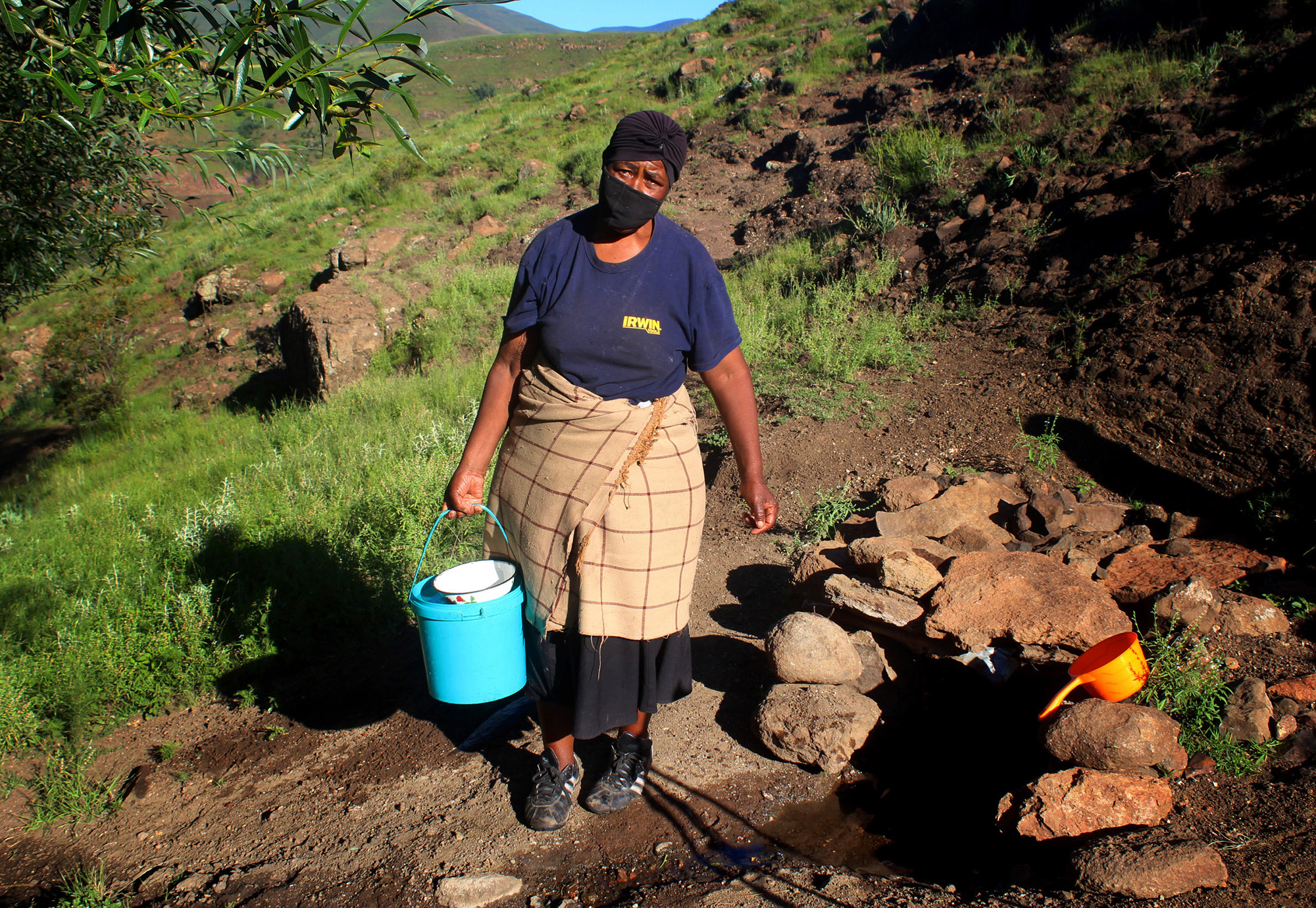
Mammofeng Sejanamane after filling her bucket with water from an unprotected well in Thabaneng village. (Photo: Sechaba Mokhethi)
Villagers look to SA with disbelief
Katse Dam is Lesotho’s biggest water reservoir, constructed under the Lesotho Highlands Water Project (LHWP). Begun in 1986, it is a multiphased, binational water project that provides water to the Gauteng region of South Africa and generates hydroelectricity for Lesotho.
A few years ago, Sejanamane worked as a domestic worker in Wonderpark in Gauteng, South Africa’s economic hub. While there, she witnessed with disbelief the wasteful usage of water by her employers and their neighbours: “Looking at how South Africans used our water, my heart bled with pain, remembering that I depended on unprotected sources back home. Katse Dam is just a stone’s throw away from my yard. What a stupidity!”
But Lesotho Water Minister Nkaku Kabi says it is difficult to channel water royalties into addressing dam host communities’ problems: “The challenge is that the money contributed by South Africa that is supposed to take care of the welfare of host communities goes straight to the consolidated [national] fund. It becomes a challenge when we request this money because the government always prioritises its [other] problems.”
Just consider that, in 2019, the Lesotho national government allocated 564-million maloti ($38.3-million) to the Ministry of Water and the ministry put 81.9-million maloti ($5.6-million) towards LHDA operations, according to the LHDA annual report. Yet, in that same year, the LHDA reported that Lesotho received 827.1-million maloti ($56.2-million) in royalties from South Africa.
Simply put, only a portion of water royalties are given to the Ministry of Water and only a portion of the ministry’s budget is channelled into the LHDA, which has other budgetary commitments apart from addressing water woes in these host communities.
And, indeed, when these writers visited the areas of Thabaneng, Ha Seshote, Sekokoaneng and Poloko Ha Mohale, with the exception of pit toilets and gravel roads, we found little evidence that these water royalties were being used to improve the lives of these people.
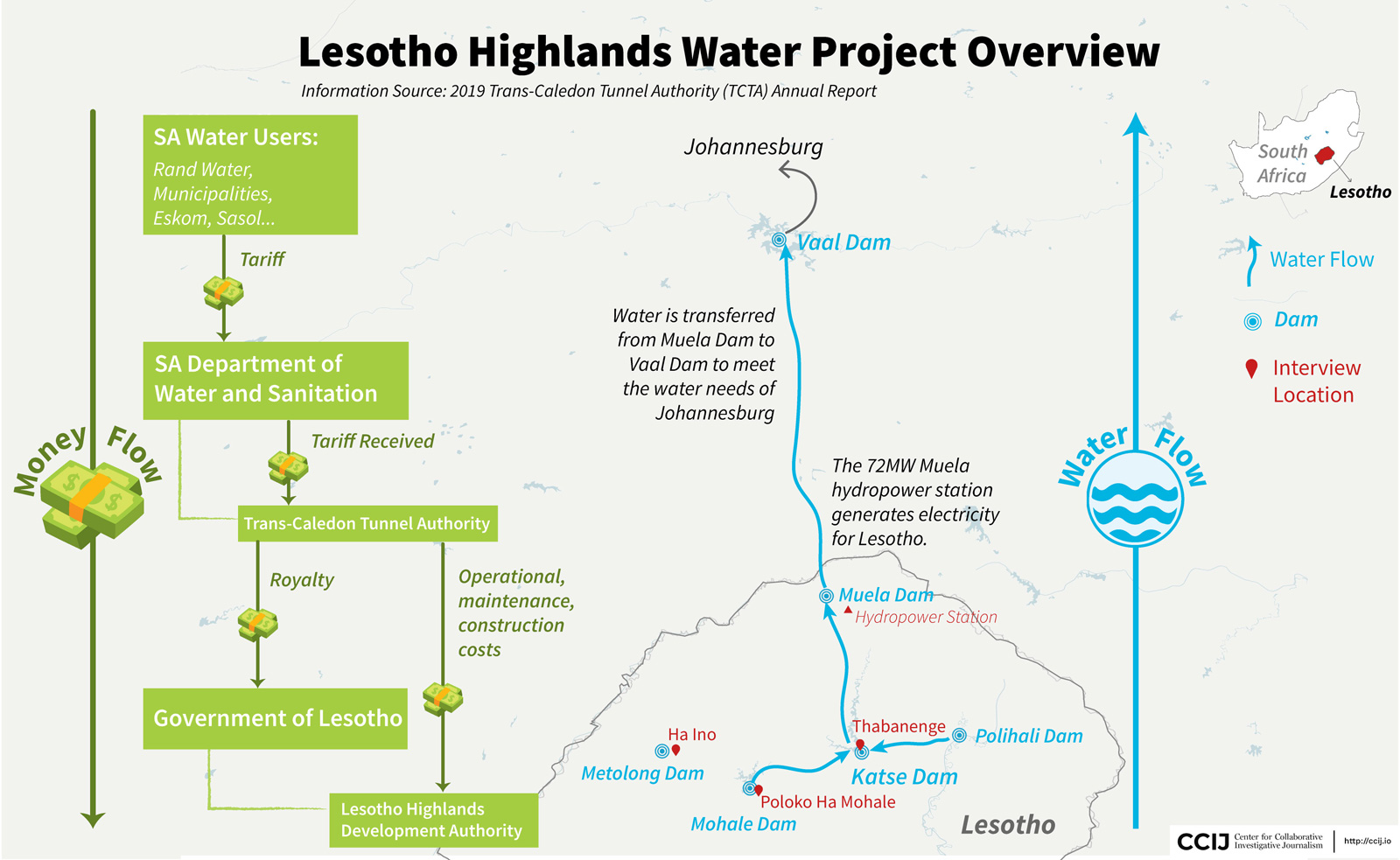
So near, yet so far
Sejanamane, who suffers from excruciating pain in her knees, walks down a rocky slope to collect water from unprotected wells a few metres from the margins of Katse Dam. Although the dam is not fenced off, villagers say they avoid trying to collect water from it because its sides are extremely steep and slippery – and the risk of serious injury is too great.
Sejanamane and her fellow villagers must rely on the wells because they lack adequate access to piped water. Since 2014, the LHDA has failed to repair pipes that used to transfer water to this village. These water pipes, initially connected after dam construction to supply the village with clean water, were damaged by a series of floods and remain in a state of disrepair.
Rather than address this seven-year-old problem, Sejanamane and other villagers maintain the LHDA has been sending them running from one place to another in search of assistance.
LHDA public relations manager Masilo Phakoe admits the Thabaneng village does not have adequate access to water, saying all supplies and wetlands have run dry.
Phakoe says the LHDA is currently looking at other possible ways to supply these villages with water in association with the Department of Rural Water Supply (DRWS), but he is quick to state that it is not the authority’s job to repair broken taps.
“It is no longer the responsibility of the LHDA to repair pipes as per our agreement with the communities and the Department of Rural Water Supply,” Phakoe said.
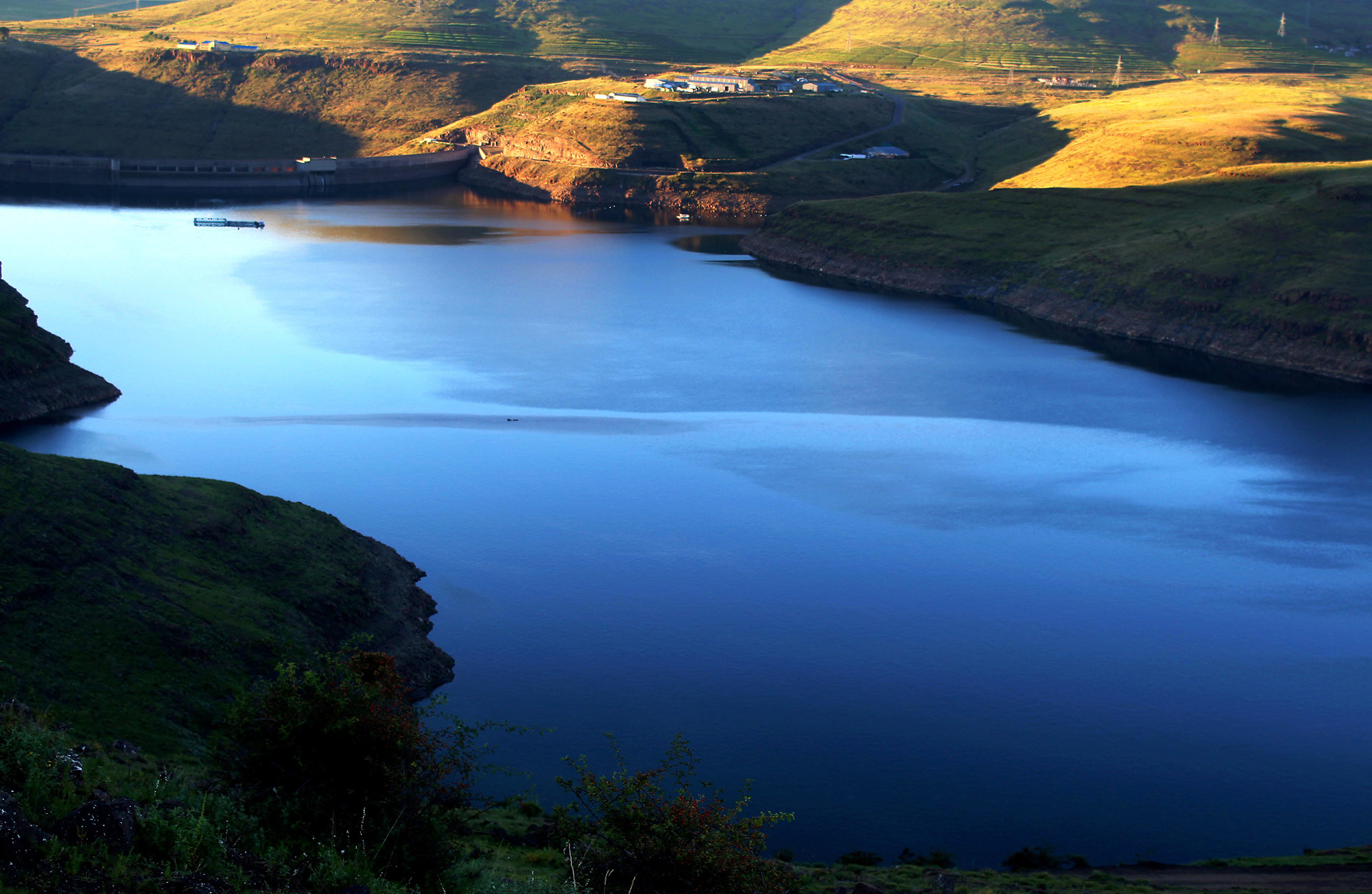
Katse Dam wall blocking Matsoku River, with the LHDA office (white) in the background. (Photo: Sechaba Mokhethi)
But the director of the DRWS, Felix Malachamela, says the existing water treaty mandates the LHDA to ensure that villages surrounding dams have access to clean water.
“Ours is to provide technical support,” Malachamela insisted.
Yet Phakoe says that, once completed, the water supply system is handed over to DRWS “for ongoing management and maintenance”.
While the LHDA and DRWS are bickering about the state of the broken pipes, Malachamela attributes much of the blame to the government of Lesotho for not allocating enough funds to the LHDA to have the capability to address the problem.
Complicating matters, the treaty governing the water project is inexplicably vague, offering little guidance in this ongoing dispute. It simply says Lesotho and South Africa commit to “pay due regard to the maintenance of the welfare of persons and communities immediately affected by the Project”.
But it fails to delineate the specific responsibilities of each country, as well as which Lesotho agency is responsible for assisting these communities when there are significant water-related failures.
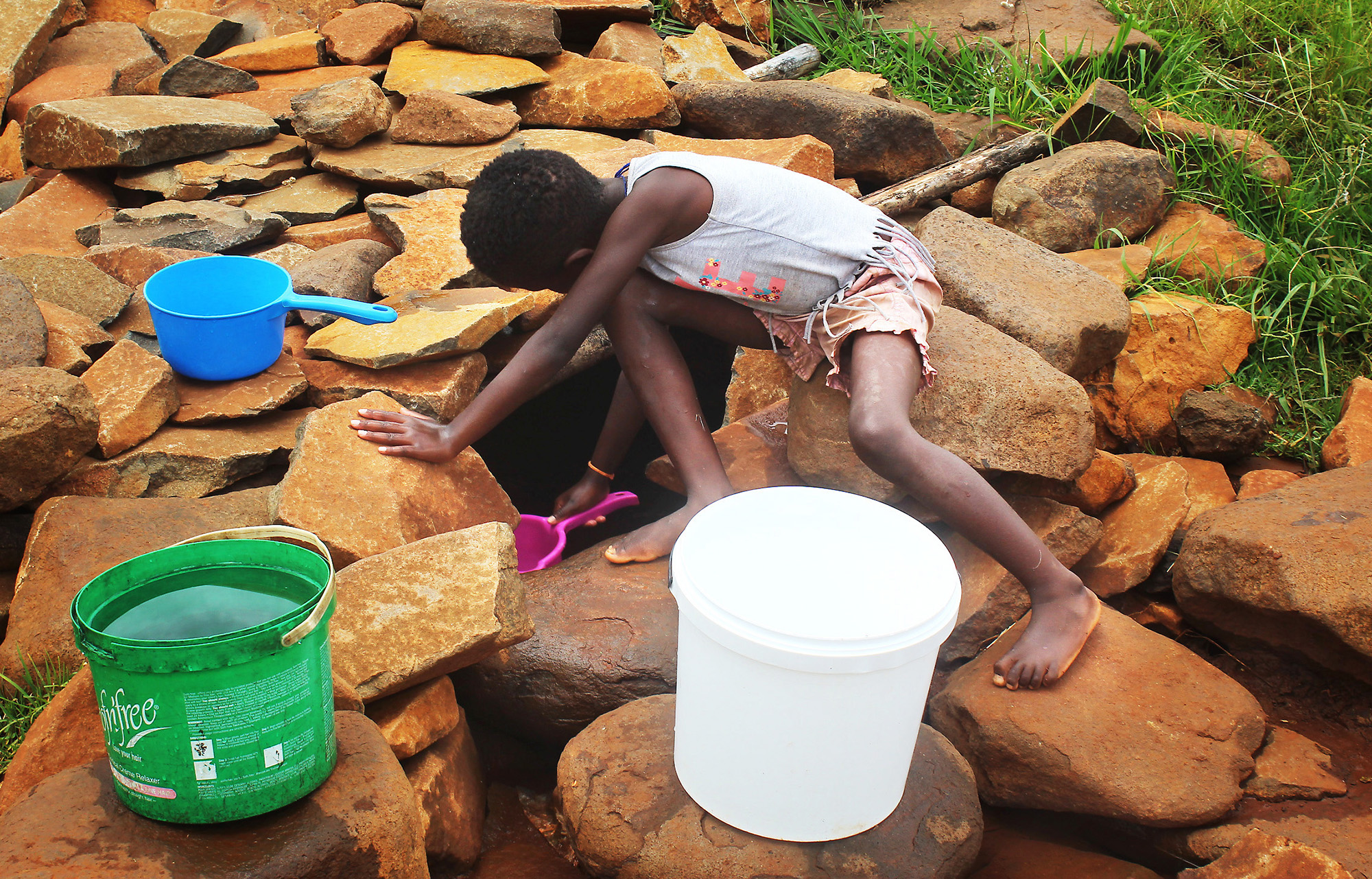
The girl draws water from an unprotected well in Ha Ino. (Photo: Sechaba Mokhethi)
Waterborne illnesses abound
Drinking water from these unprotected wells exposes villagers to serious water-related ailments, such as diarrhoea and vomiting.
“Vomiting is very common among infants in this village,” said Sejanamane, adding that her one-year-old granddaughter recently experienced episodes of retching.
“At the height of her illness, my granddaughter would cry with her hands pressed to her tummy whenever she was about to poop,” Sejanamane said.
She suspected her granddaughter’s pressing of the tummy was an indication something was wrong in her stomach.
“She looked drained. I took her to the doctor just three days ago,” said Sejanamane. The doctor’s diagnosis: contaminated food or water was likely to blame.
In five of the six villages surrounding Mohale and Katse Dams recently visited by our crew, there are reported cases of diseases caused by drinking dirty water, all while the precious liquid in their backyards is tunnelled to South Africa.
According to World Health Organisation data, in 2017, almost eight in every 1,000 children under age five in Lesotho died of diarrhoea, an ailment often caused by drinking dirty water.
The Lesotho Health Statistics report paints a gloomy picture of how diarrhoea and gastroenteritis are wreaking havoc among Lesotho’s youngest children. In 2018, waterborne diseases were the second leading cause of hospital admissions for children under five, comprising about 25% of the 3,154 cases.
About 150km away from Sejanamane’s home, Poloko Ha Mohale, a village of fewer than 100 people next to Mohale Dam, is battling its own outbreak. The village relies on two unprotected wells.
The LHDA left Poloko Ha Mohale out when it constructed communal taps. Toilets constructed by the LHDA more than 22 years ago are the only visible development in this village.
“It doesn’t feel well to watch the neighbouring villages enjoy access to clean water while we have been affected the same way by the dam’s construction,” said Mathabiso Mokulubete, Poloko traditional healer and a village health worker.
The LHDA’s water and sanitation programme only covers villages upstream of the dams. But communities downstream of the Mohale Dam, such as Poloko Ha Mohale, received compensation for estimated downstream impacts on resources, ecosystems and communities as a result of anticipated reduced river flow, according to the LHDA’s public relations manager Phakoe.
“Unlike other villages in the same situation which opted for development projects, the community of Poloko Ha Mohale opted for the construction of toilets… Therefore, the village was not left behind,” Phakoe said.
Water Minister Kabi said the government asked councillors and parliamentarians to supply names of villages with water issues around the dam projects. “We will address these challenges with the funds consolidated from Rural Water Supply,” he said.
Mokulubete says diarrhoea and vomiting remain major diseases that trouble her community, with at least three diarrhoea outbreaks in 2015, 2019 and 2020.
Neither she nor her four-year-old grandson have been spared. She said that last July she started experiencing abdominal pains, followed by diarrhoea and vomiting.
“I tried to stand the illness and went on with my daily duties but that didn’t last as my body became weaker and weaker… I was bedridden for two weeks before I could see a doctor because I didn’t have the means to go to the clinic,” Mokulubete said.
A few months later, Mokulubete noticed that her grandson was tired, listless and sleeping more than normal. Then the young boy started vomiting and passing watery stools before losing his appetite entirely.
“We took him to the clinic, and I was given oral rehydration solution to administer to him at home,” said Mokulubete. “The doctor said the ailment was caused by eating contaminated food or drinking unclean water.”

Lindiwe Hloaele in the middle of her journey home to Thabaneng village, mounting a rocky slope with 25 litres of water on her head. (Photo: Sechaba Mokhethi)
Schoolchildren bear the brunt
Striving to balance school and homework with family chores and the never-ending scramble for water exacts a heavy toll on girls in water project host communities. Their hopes of breaking free of poverty and having access to clean water one day are still just a dream.
Mokulubete has two teenage daughters – Moliehi (18) and Seitebatso (16) – who wake up early every day to fetch and warm the water for their household.
“That consumes a lot of our time before we go to school,” Moliehi said as she stared in the direction of Mohale Dam, less than two kilometeres away. “We arrive late at school since we walk a long distance. At times we find other students already studying.”
Frogs and dead insects are permanent features of the well where they usually collect water, she added: “Even the animals stand in the water to drink. Once the water is muddied by the animals, we have to wait hours for the mud to settle before we can draw water.”
Katse High School student Hloaele used to collect water from a communal tap before the pipes her village relied on were washed into Katse Dam by floods in 2014. “The situation forced us to resort to the unprotected well,” Hloaele said. During dry seasons, however, Hloaele has to collect water before going to school because wells dry up as the day passes – a thrice-daily ritual that has exacted a heavy physical and academic toll: “This affected my school work. Walking up the hill three times a day while carrying a 20-litre bucket on my head is very exhausting. I take several rests up the slope, limiting my study time.”
Once again, Phakoe said that the LHDA’s responsibility for ensuring there is access to clean water stops after construction of taps for host communities is complete. From there, he added, it becomes the responsibility of the DRWS.
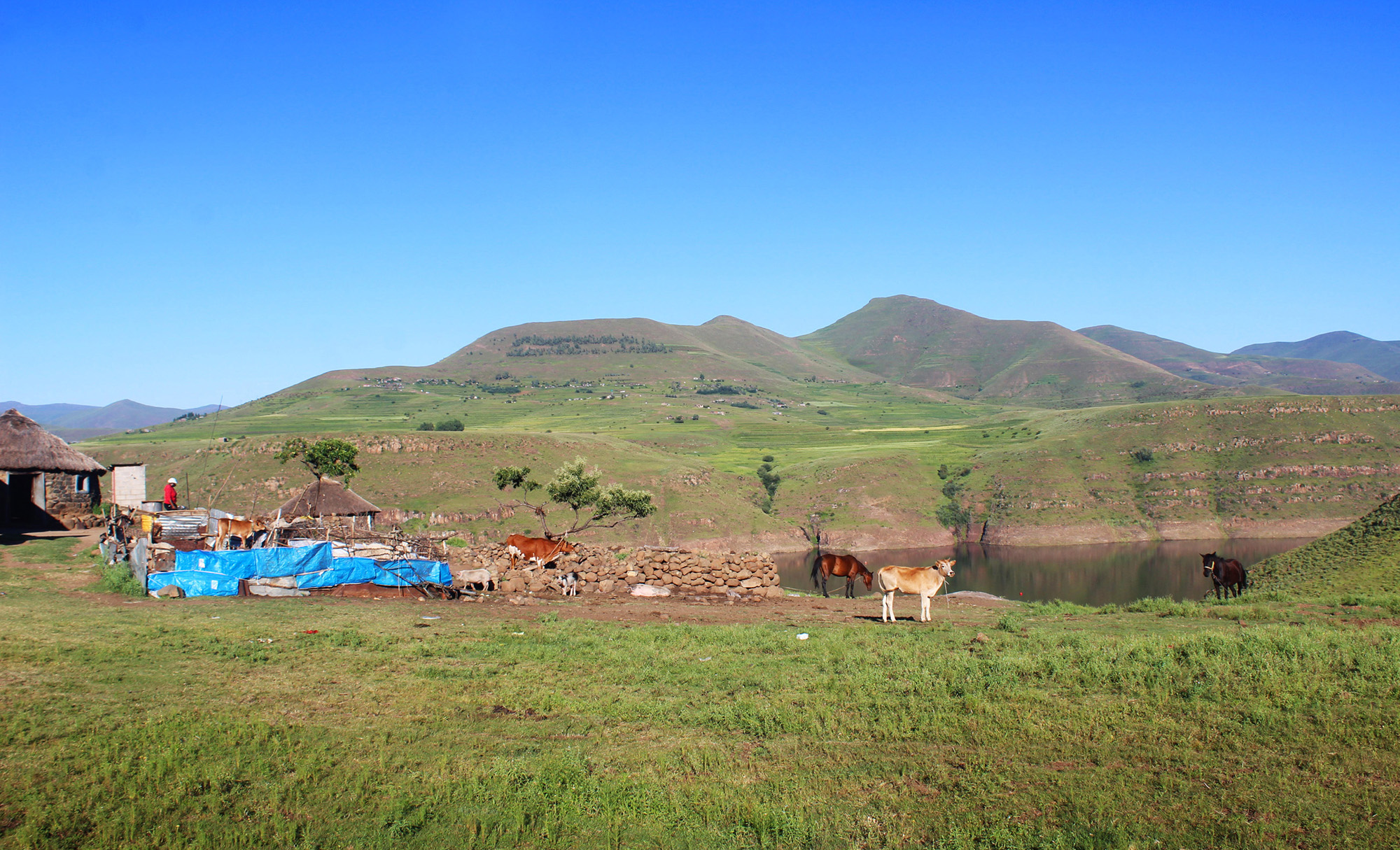
Lindiwe Hloaele doing family chores in Thabaneng village, metres from Katse Dam. (Photo: Sechaba Mokhethi)
Economic spin-off
The Lesotho water project is widely regarded as an African success story – an example of peaceful cooperation and supposedly mutually beneficial socioeconomic development across the region.
But the project has also been the subject of corruption allegations that paint a damning picture of how the project tenders are reportedly used to satisfy private interests in South Africa. Meanwhile, the plight of local communities in Lesotho is perpetuated by government failure to allocate enough funds to fix pipes and taps.
In 2017, the Organisation Undoing Tax Abuse (OUTA) – an anti-corruption advocacy organisation – accused South Africa’s then minister of water and sanitation, Nomvula Mokonyane, of delaying phase two of the LHWP, costing South African taxpayers at least R2-billion or more.
It alleged that Mokonyane tried to ensure that her preferred service providers “got the cuts” of the R25-billion project, but the minister dismissed the claims as a rehash of old allegations made without evidence or proof.
The OUTA accusation followed revelations that Mokonyane removed South Africa’s chief delegate to the Lesotho Highlands Water Commission, Dr Zodwa Dlamini, from the project without providing a reason. She was reportedly replaced by Bheki Nkosi, who served under Mokonyane when she was Gauteng premier and worked alongside her in ANC provincial structures.
Meanwhile, in 2016, the World Bank reported that Lesotho derived 3% of its $2.165-billion (R31.47-billion) gross domestic product (GDP) from this project.
Having cashed in on the water project, however, the government of Lesotho used the royalties to finance the national budget as part of the consolidated fund without giving priority to addressing water woes in vulnerable communities surrounded by the water project dams.
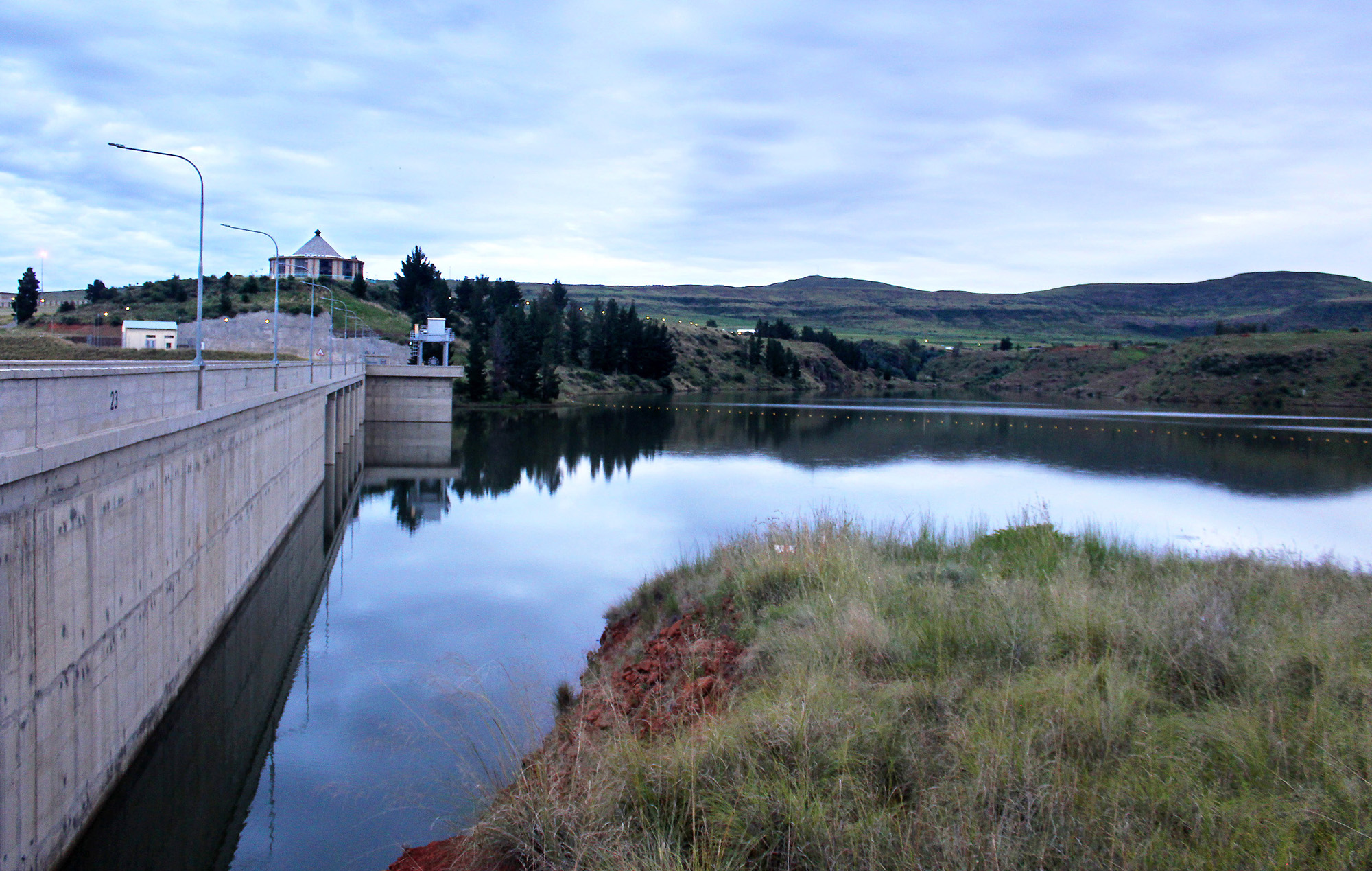
Metolong Dam and Metolong Authority Information Centre. (Photo: Sechaba Mokhethi)
Profits over communities?
Polihali Dam, the third dam under construction as part of the LHWP, will increase the rate of water sales to South Africa to more than 1,270 million cubic metres per annum starting in 2026, according to the LHDA.
To ensure Mokhotlong residents and those around existing dams have access to clean water, Malachamela, director of DRWS, says Lesotho is considering “reviewing the treaty to allow host communities to pipe water from these dams as climate change is drying up wetlands.”
In its current form, he says the LHWP treaty does not allow Lesotho to access water from these dams.
But Kabi disagrees: “The treaty allows us access to water. For example, a Katse tunnel passing through Clarens has an outlet into the Hololo river, Botha-Bothe, for animals along that line.”
Kabi added that his ministry has asked the government to give him additional permissions to draw water for these communities directly from the dams. For this to happen, the government has to allocate a special dispensation of funds for the ministry to hire the contractors needed to complete this job.
But some disgruntled villagers are tired of waiting for politicians’ promises to become reality. A few years ago, members of the Sekokoaneng village, located in Mohale, connected water from an LHDA tank without approval from the authority. They did so after the LHDA allegedly refused to repair pipes transporting water from wetlands affected by the highlands water project.
Now that there is a reliable water supply, the LHDA is taking credit. “The village [Sekokoaneng] is one of those nearby villages that share the same water source as the LHDA,” Phakoe said. “The villagers … draw water from the tank located above their village and this water is also used by the LHDA.”
Sekokoaneng chief Tšepang Makoae, 54, accused the LHDA of not prioritising their water needs: “Instead of connecting water to our homes, the LHDA constructed a big tank above our village. The harvested water in that tank supplies water to the LHDA operation centre. The water transferring pipes pass through our backyards.”
He added that villagers took it upon themselves and connected pipes to the LHDA tank above their village without consulting the authority. “This is why you see water taps in every household,” he said, noting that these taps continue to supply Sekokoaneng households with water.
A similar situation happened in Metolong, where surrounding villagers vandalised water pipes passing through their communities. The pipes supply several towns, including Mazenod, Morija, Roma and Teya-Teyang, with potable water, while villagers struggle to access clean water.
Meanwhile, prospects of constructing yet another reservoir, Makhaleng Dam, are under way. The harvested water from the Senqu Valley will be transferred to South Africa and Botswana for a hefty price, solidifying Lesotho’s position as Southern Africa’s water supplier.
Makhaleng will be the fifth-biggest dam, after Katse, Mohale, Metolong and Polihali.
Now the question being asked is if Makhaleng communities will suffer the same fate as villagers living close to these existing dams.
“I always wonder what is going to become of us after the construction of Makhaleng, and I really wonder if we [will] have access to the water,” said 30-year-old Rethabile Manyathela, a resident of nearby Mafeteng. DM168
This report was produced in collaboration with the Centre for Collaborative Investigative Journalism, supported by Wits Journalism and Civicus.
This story first appeared in our weekly Daily Maverick 168 newspaper which is available for free to Pick n Pay Smart Shoppers at these Pick n Pay stores.
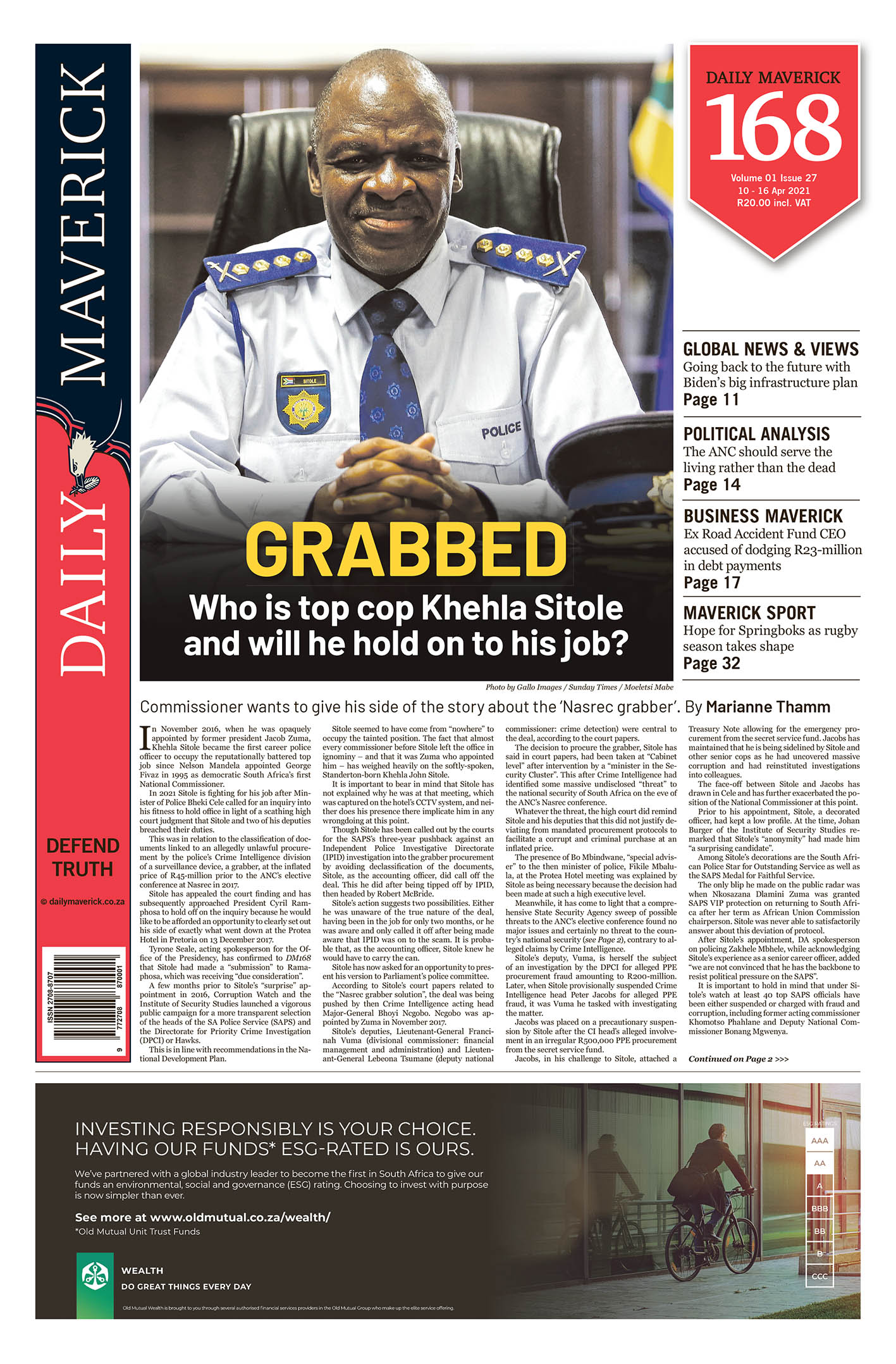

















 Become an Insider
Become an Insider
Sounds like a big fine coming….eventhough this was originally a joint venture between SA and Lesotho! Perhaps there is a compromise – we give them some of our water & they give us some of their electricity!
Why has there to date not been any reference to the shenanigans at Water Affairs and the Water Boards? With all that happened, and didn’t happen at WA, why has Nomvula Mokonyane not yet been part of the Zondo Commission’s enquiries?
Semantics I guess , I see the pictures , where the water was a massive river , not a stream !